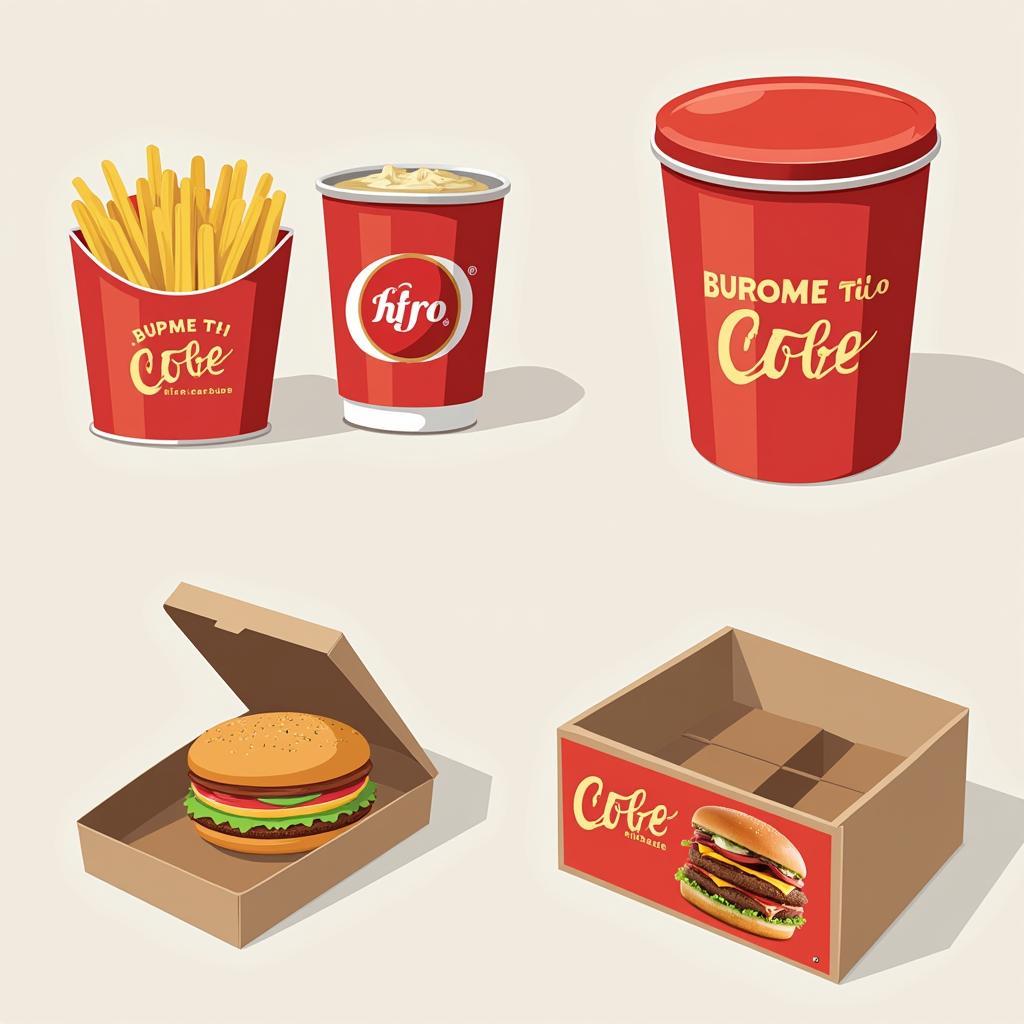Fast Food Containers are an essential part of the modern dining experience. From holding crispy fries to saucy burgers, these seemingly simple vessels play a crucial role in food safety, convenience, and even brand identity. But have you ever stopped to consider the fascinating world of fast food containers? This guide dives deep into everything you need to know about these everyday essentials.
Choosing the Right Fast Food Containers for Your Business
Selecting the right fast food containers is a critical decision for any food service operation. It impacts not only the presentation of your food but also customer satisfaction and your bottom line. Several factors should be considered when making this choice. Firstly, the type of food you serve will dictate the container material and design. For example, hot, greasy foods require containers that can withstand high temperatures and prevent leakage. Secondly, consider the size and shape of the container. Portion control and ease of handling are key. Finally, think about your brand image. Eco-friendly options are increasingly popular, reflecting a growing consumer awareness of environmental issues. Choosing suitable fast food containers can significantly improve the customer experience.
One of the biggest challenges faced by businesses today is finding the balance between cost-effectiveness and quality. While cheaper options might seem appealing, they could compromise the integrity of your food, leading to customer dissatisfaction. Investing in high-quality fast food containers can be a worthwhile investment in the long run.
The Impact of Material on Fast Food Packaging
The material of your fast food container is paramount. It affects the taste, temperature, and safety of your food. Common materials include cardboard, plastic, and foam, each with its pros and cons. Cardboard is biodegradable and offers good insulation, but it can become soggy with greasy foods. Plastic is durable and leak-proof, but it’s not always environmentally friendly. Foam offers excellent insulation but is not biodegradable and raises concerns about potential health risks. Understanding the properties of each material is crucial for making an informed decision.
Innovative materials are constantly being developed, such as biodegradable plastics and plant-based containers, offering more sustainable options. Choosing eco-friendly fast food containers demonstrates a commitment to environmental responsibility, which resonates with many consumers today.
What are the benefits of using divided food storage containers? Divided food storage container with lid can help keep different food items separate and organized, preventing flavors from mixing and maintaining the integrity of each dish.
The Future of Fast Food Containers: Sustainability and Innovation
The fast food industry is constantly evolving, and so are its containers. Sustainability is a driving force, pushing innovation towards more eco-friendly solutions. Biodegradable and compostable options are becoming increasingly popular. Additionally, reusable container programs are gaining traction, encouraging customers to reduce their environmental footprint. The future of fast food packaging lies in finding a balance between functionality, cost, and environmental responsibility.
Why are fast food containers important?
Fast food containers are essential for maintaining food safety and hygiene, ensuring convenient transport, and preserving food quality. They also play a significant role in portion control and branding.
What are the most common types of fast food containers?
The most common types include clamshells, boxes, wraps, cups, trays, and bags, often made from materials like cardboard, plastic, or foam.
“Choosing the right fast food container can make or break your business,” says renowned food packaging consultant, Amelia Harper. “It’s not just about holding food; it’s about enhancing the customer experience.”
Conclusion
Fast food containers are much more than just vessels for our favorite meals. They are a crucial component of the fast food industry, impacting everything from food safety and convenience to brand image and sustainability. By understanding the various factors involved in choosing the right fast food container, businesses can make informed decisions that benefit both their bottom line and the environment. Consider switching to fast food containers that align with your business values and cater to evolving consumer demands.
FAQs
- What are the most eco-friendly fast food container options?
- How can I choose the right size container for my food portions?
- What are the regulations regarding food packaging materials?
- Are there reusable fast food container options available?
- How can I dispose of fast food containers responsibly?
- What are the latest innovations in fast food packaging technology?
- How can I customize fast food containers with my brand logo?
“The shift towards sustainable packaging is not just a trend; it’s a necessity,” adds environmental advocate, Dr. David Miller. “Businesses that embrace this change will be rewarded with both customer loyalty and a healthier planet.”
 Branded Fast Food Packaging
Branded Fast Food Packaging
For further information on food preservation, you might be interested in our biltong food dehydrator. And for pet owners, we have an interesting article on dry dog food shapes. Finally, those interested in unique food experiences can explore hammock food.
If you need any further assistance, please do not hesitate to contact us. Call us at: 02437655121, Email us at: [email protected] Or visit us at: 3PGH+8R9, ĐT70A, thôn Trung, Bắc Từ Liêm, Hà Nội, Việt Nam. We have a 24/7 customer service team.